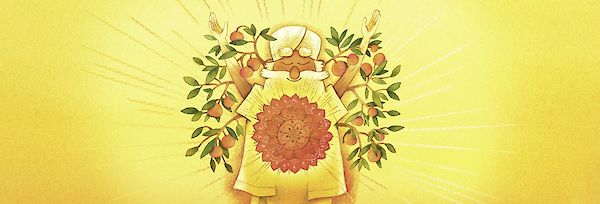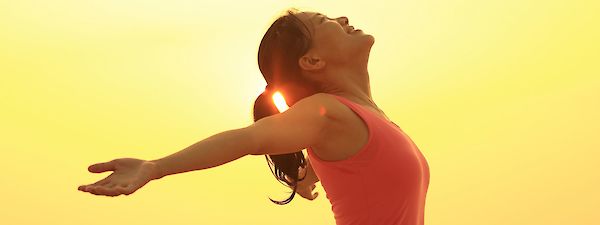Animal-inspired yoga poses
The dog, the cat, the cobra – many yoga poses are inspired by the animal kingdom. Why is this the case? One possible explanation is that yoga masters have always lived in harmony with nature and drawn inspiration from it. The positions of some yoga poses are reminiscent of postures that animals instinctively assume, which explains why the poses are named after the animals that inspired them. So, for example, the stretch that dogs typically perform after standing up serves as inspiration for the “downward-facing dog” pose, while the way that cats often arch their back is reflected in the cat-cow pose.
We show you how to practise the most common animal-inspired yoga poses and explain their positive effects on your health and wellbeing.
Please note that there are different variations of the poses presented here, aimed specifically either at yoga novices or advanced practitioners. Please seek the advice of an experienced yoga teacher as to which variation of each exercise is the most suitable for you.
Downward-facing dog (Adho Mukha Shvanasana)
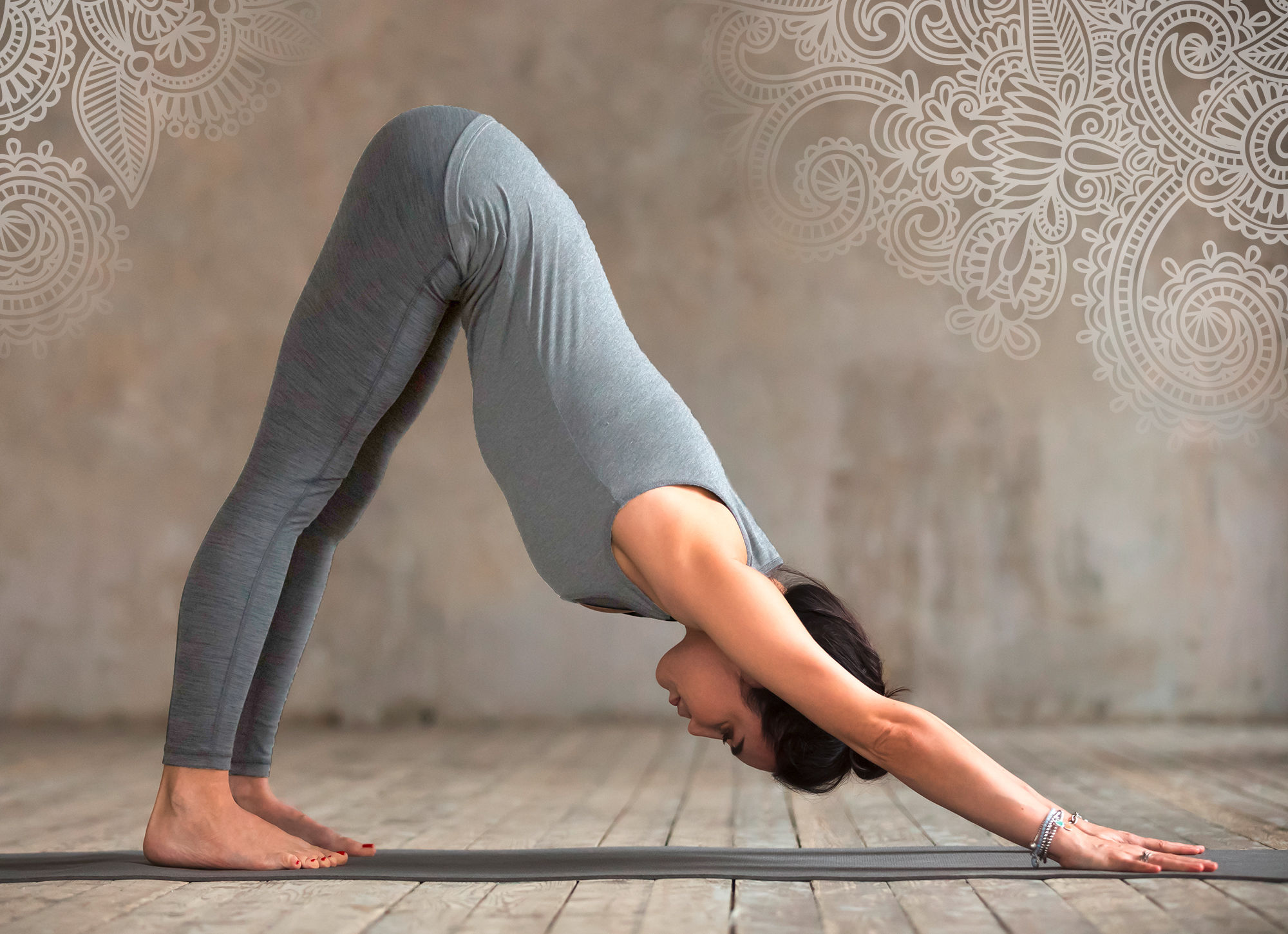
The downward facing dog (also known as the triangle pose) is one of the most well-known yoga poses. Get into the table-top position on all fours, with your hands and knees firmly in contact with the ground and your back as extended and straight as possible. Go onto the tips of your toes. Lift your knees off the ground and prop yourself up with your hands and the balls of your feet / your toes. Stretch your hips up and back (away from your head), so that your body forms a triangle. Draw your shoulder blades away from your ears. Continue to hold your spine in a stretched, straight position with your head held in alignment with your spine. Continue to increase the stretch in your legs, but only as far as you can without bending your back. Take some slow, deep breaths and hold this position for a few seconds. Repeat the exercise three times.
This pose supplies your brain and spine with blood. It clears the lungs and strengthens your sense of balance. It also helps clear your mind and foster your creativity, self-confidence and concentration.
The cobra (Bhujangasana)
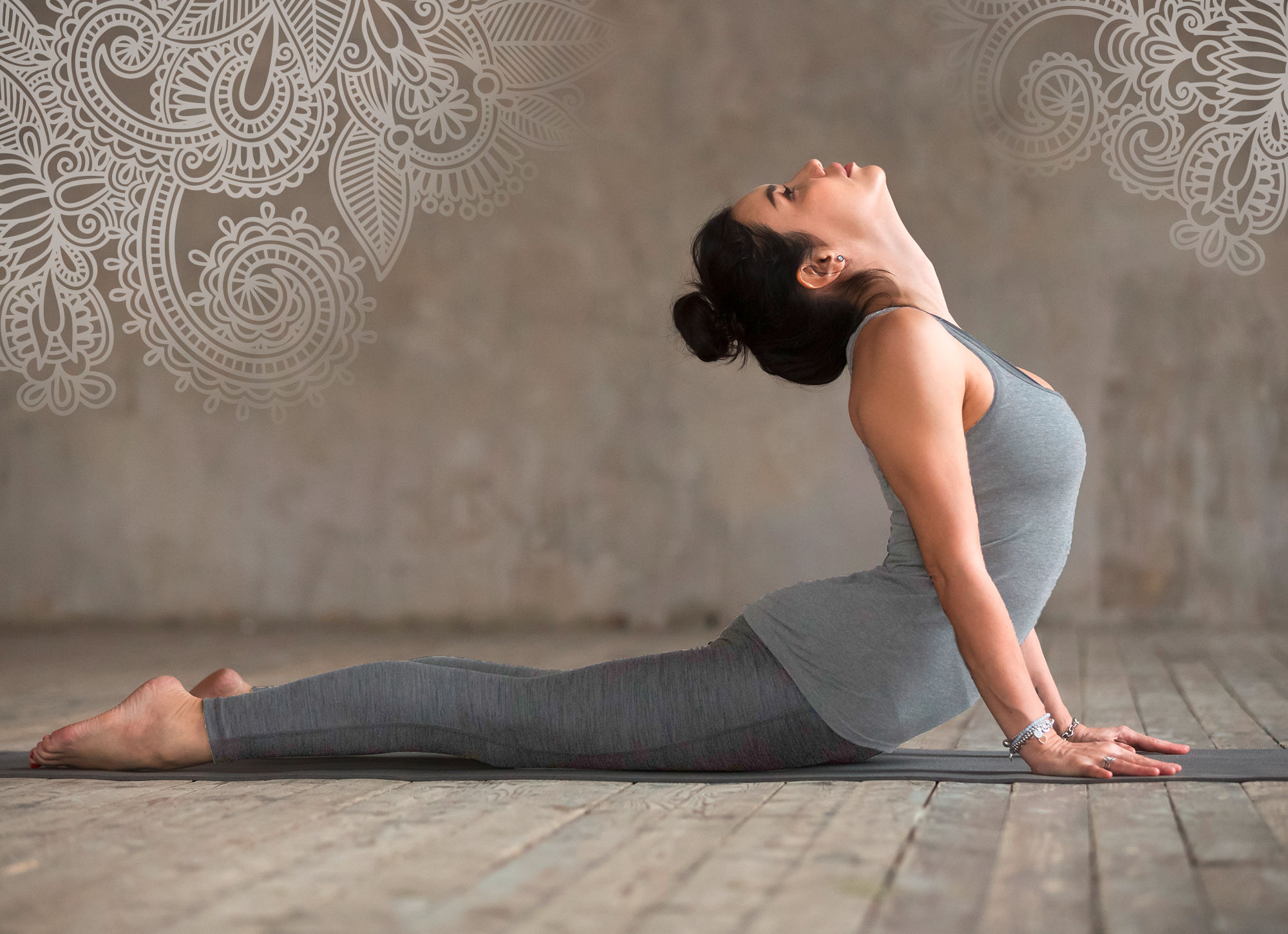
The cobra pose mimics the erect posture of a snake. To perform this pose, lie on your stomach and place your hands on the floor beneath your shoulders with your palms flat on the ground. ‘Anchor’ your pubic bone to the floor and draw your pelvic floor and navel inwards towards your spine to protect your back against compression. Using your arms to press yourself off the floor, lift your torso off the ground and stretch it in a big arch to open your ‘heart space’. Keep your elbows close to your body, with your arms slightly bent at the elbow (ideally, stretched if possible). Lie your head back slightly against the nape of your neck without compressing your cervical spine. Hold this pose for 12 seconds and repeat the exercise three times.
The cobra pose helps to strengthen your pelvic, back and arm muscles. It also boosts your confidence while opening and freeing you up.
The cat-cow pose (Chakravakasana)
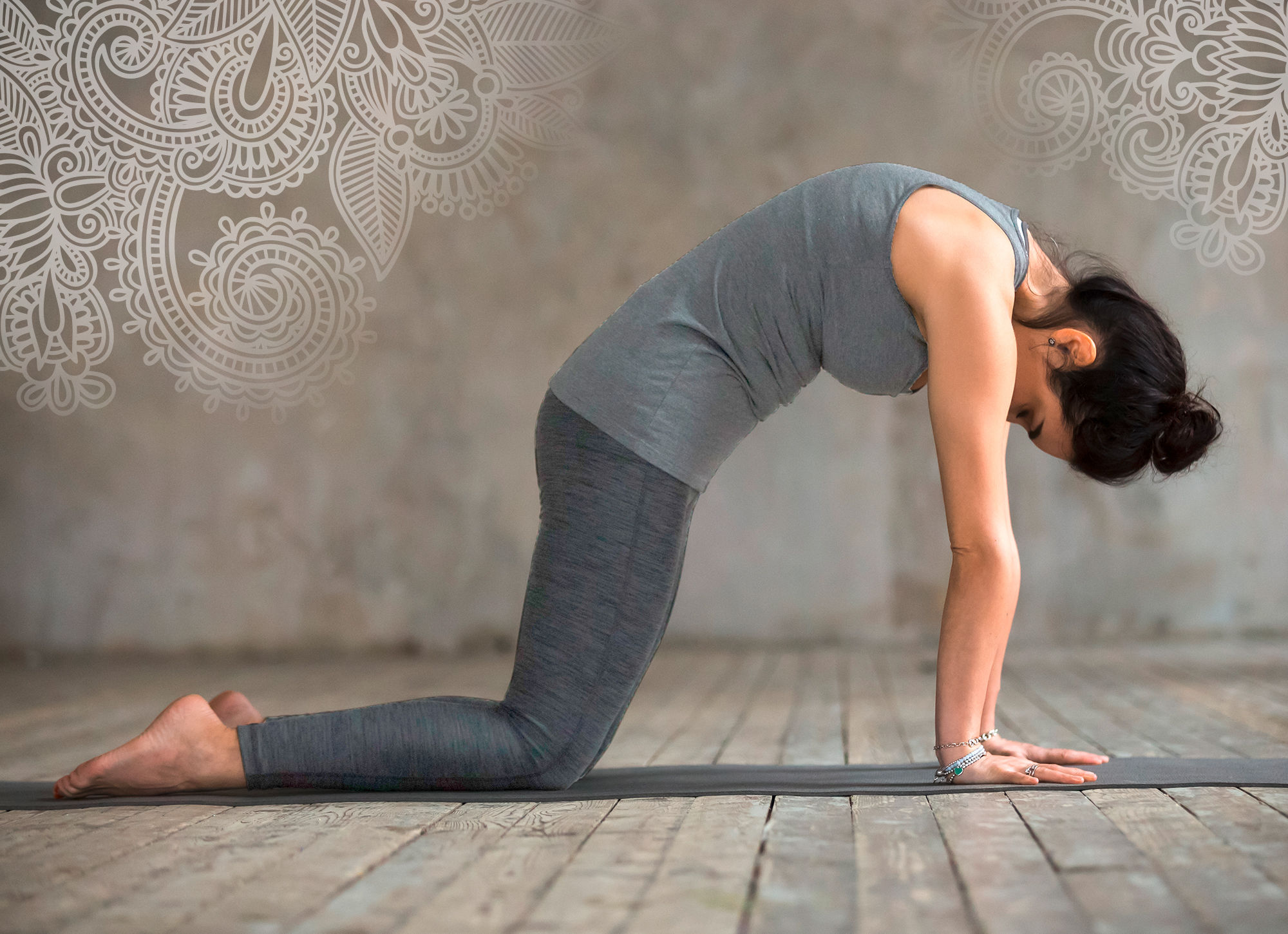
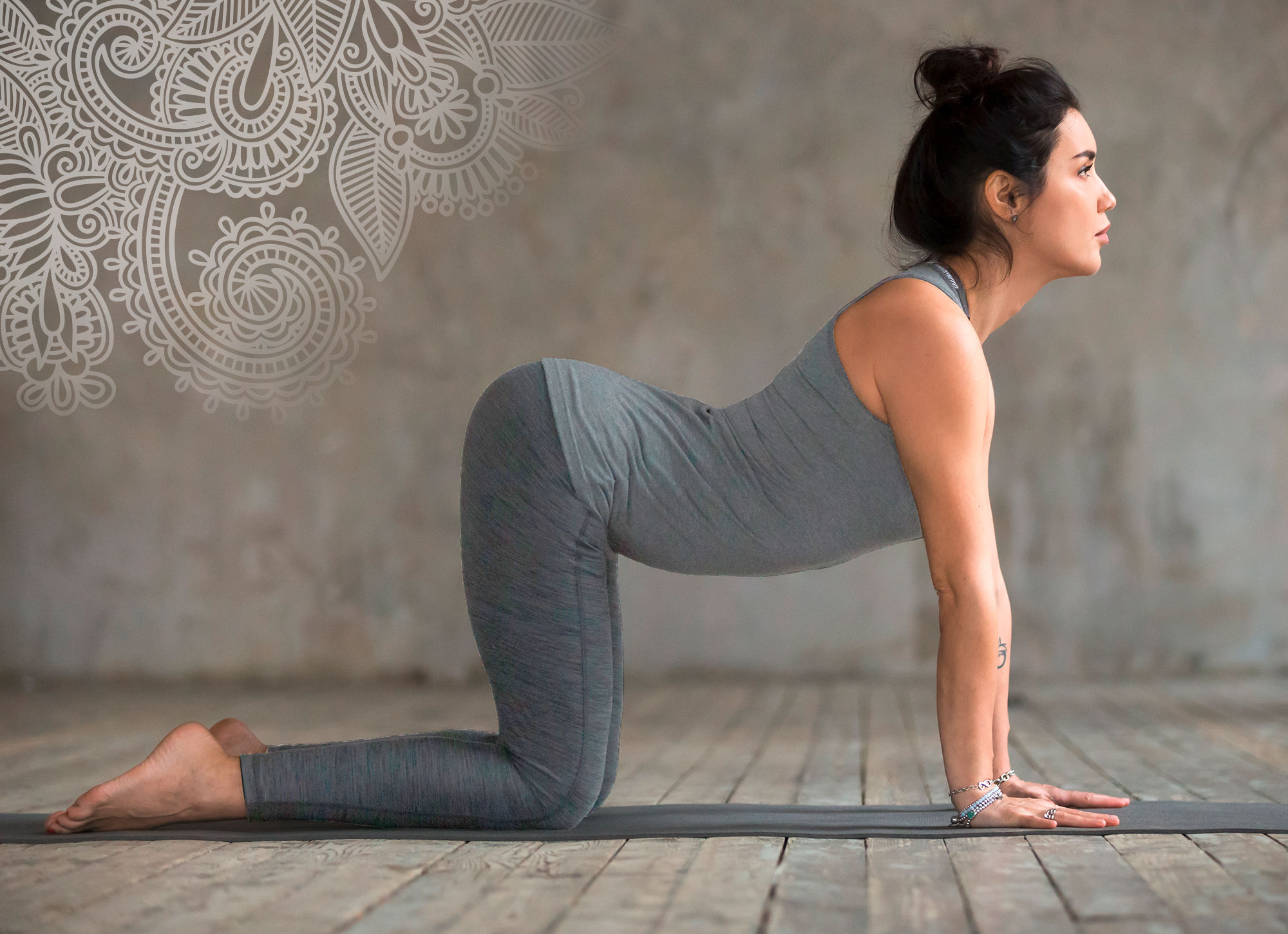
With this exercise, you swap from the cat to the cow pose. Assume the table-top pose (on hands and knees) and raise your pelvis as you exhale so that your spine rounds towards the ceiling. Your back will now resemble that of a cat (arching its back), with your chin nearing your breastbone. Now breathe in and round your spine downwards towards the floor. Draw your navel inwards as you do this (to avoid an excessive hollow-back position), tilt your pelvis downwards, pull your shoulder blades down (away from your ears) and lift your head at the same time so that your gaze is directed forwards. Your slightly bowed spine now resembled that of a cow. Repeat the exercise three times.
The cat-cow pose makes your spine more mobile, strengthens your back muscles and helps release tension.
The butterfly (Bhadrasana)
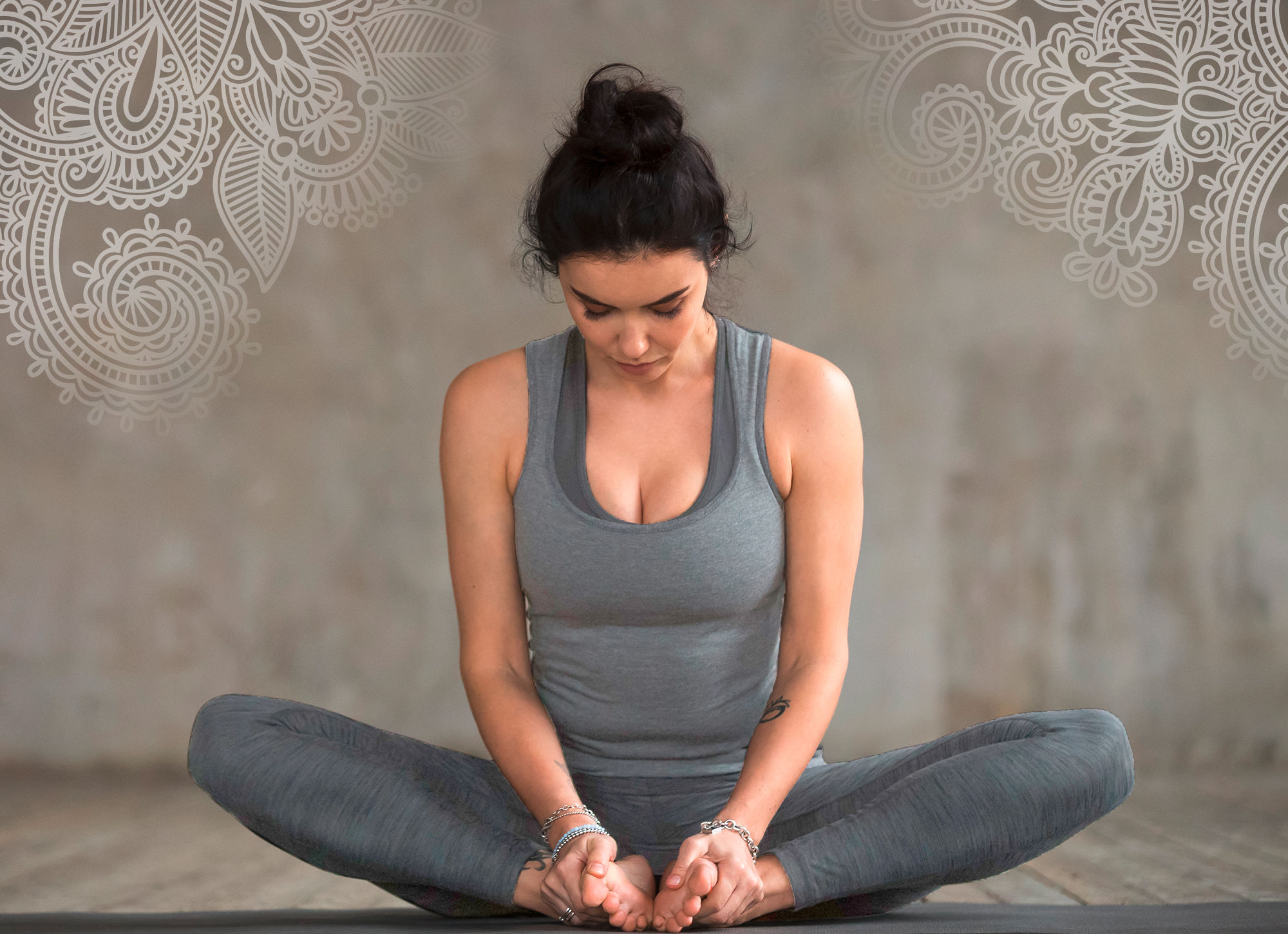
This is a seated pose reminiscent of a butterfly. Sit on the floor, place the soles of your feet together and allow your knees to gently drop to the sides. Grasp your feet individually with your hands or enclose them with interlocked fingers. Hold this position with a straight spine for up to three minutes while breathing deeply. Then place your hands beside your body and stretch your legs out one after the other in front of you and relax.
The butterfly pose stretches your upper inner thighs and makes your hips more flexible. It stimulates the organs in your abdomen and promotes blood flow. This pose symbolises the will to develop and undergo renewal.
The pigeon pose (Eka Pada Rajakapotasana)
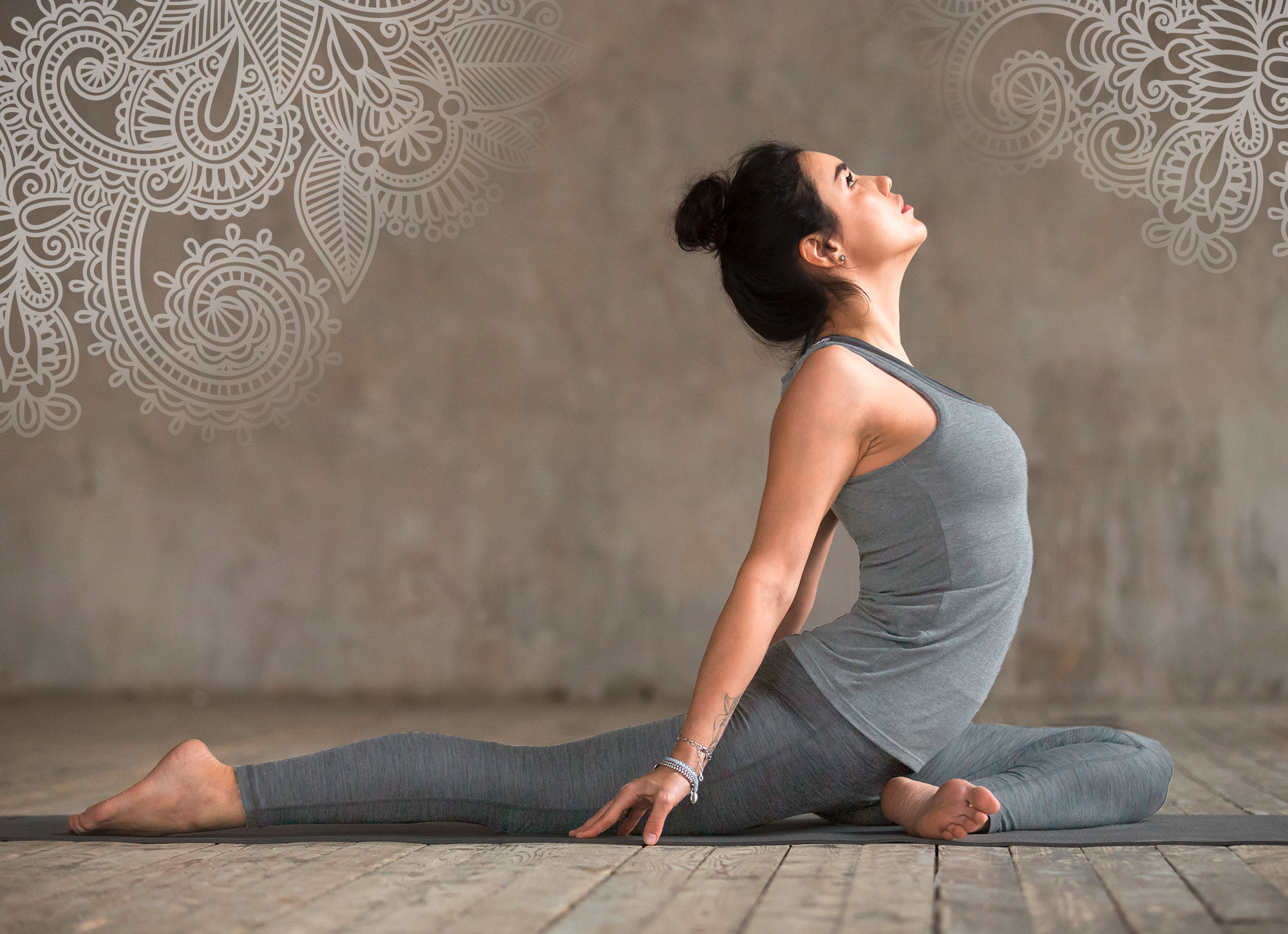
In this yoga pose, your posture is similar to that of a perching pigeon. Assume the table-top pose and then place your right lower leg between your hands (easier variant: push your bent right leg forward so that you come into a seated position on the heel of your right foot). Stretch your left leg out behind you. Lift your torso into an upright position and feel the stretch in your left groin and thigh. Once you have achieved a stable seated position, you can arch your back slightly while looking slightly upward and stretching your heart space even further. Repeat the exercise on the other side.
The pigeon pose opens your hips and stimulates the organs in your abdomen. By arching your spine, you also open up your chest and shoulders. The pigeon pose has an activating effect and opens and wakens the mind.
The camel pose (Ustrasana)
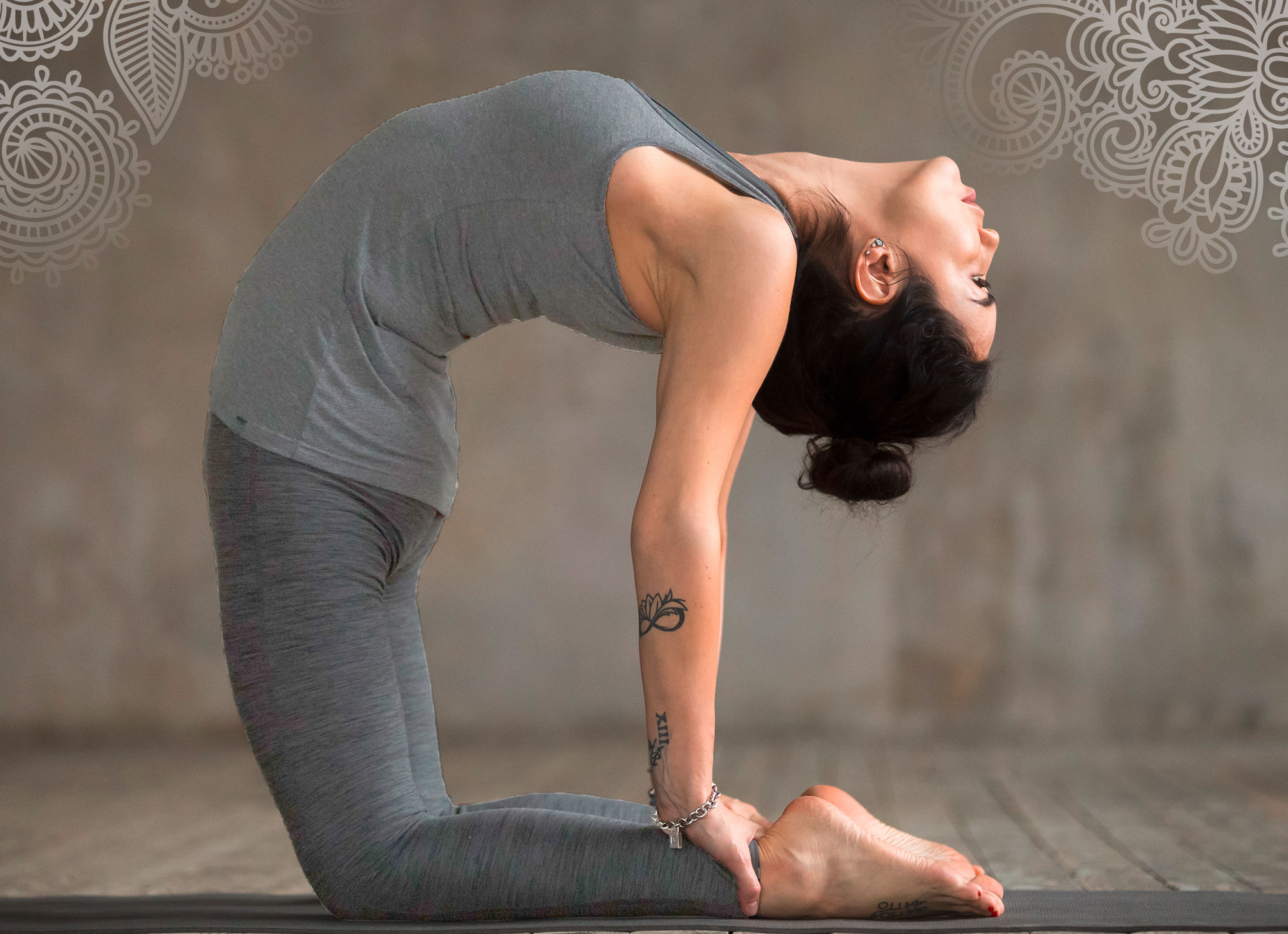
The camel pose is an exercise that bring the front and back of your body into balance. Assume a kneeling position and achieve a sense of solid support from the ground via your knees, shins and backs of your feet. Draw in your navel to stabilise your pelvis and lower back. This helps you avoid a hollow-back position as you lean further and further back while keeping your thighs perpendicular to the ground. As much as your mobility allows, either cross your hands behind your back or rest your hands on your heels (you may have to go on tiptoes) while raising and stretching your chest. Take long, deep breaths. Hold this position with a strong navel point so that your glute muscles can relax as much as possible. The camel pose helps you further develop your flexibility and stretches your chest. The pose opens your mind and represents zest for life.
Further yoga-based inspiration
For further yoga-based inspiration, take a look at our yoga videos for beginners and advanced practitioners.

